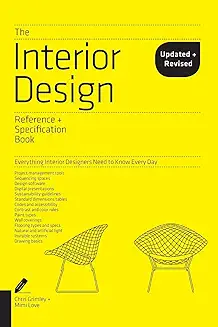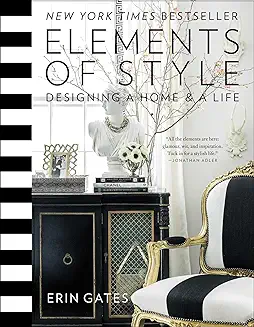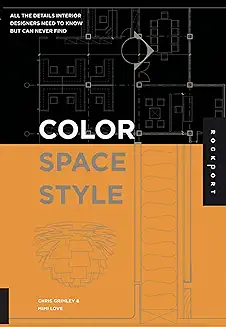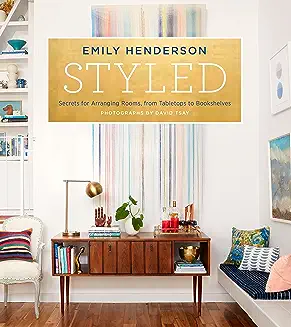A room should never allow the eye to settle in one place. It should smile at you and create fantasy.
- Craig J A

- Nov 19, 2023
- 9 min read
As the end of the year is nearing and I look at my dream house on my vision board, I always wonder how I will design my dream home. I will probably need an interior designer, then BINGO! I thought of a blog post to explore the career of an interior designer. Embarking on a career as an interior designer is a thrilling journey of transforming spaces into vibrant expressions of creativity. While an innate sense of design is invaluable, acquiring the right qualifications is essential to navigate the intricate world of interior design. Let's explore the educational and professional qualifications that lay the foundation for a successful career in this dynamic field.
1. Formal Education: Designing Knowledge
A primary route to becoming an interior designer involves pursuing a formal education in interior design or a related field. Many reputable institutions offer bachelor's degrees in interior design, providing a comprehensive curriculum covering design principles, spatial planning, colour theory, and material selection. Some programs also include internships, enabling students to gain practical experience and build a portfolio while still in school.
2. Certification Programs: Elevating Expertise
Complementing formal education, aspiring interior designers can pursue certification programs to deepen their expertise and stand out in the competitive job market. Organisations such as the National Council for Interior Design Qualification (NCIDQ) offer certification exams that assess a designer's knowledge and skills. Achieving NCIDQ certification is widely recognised within the industry and can enhance professional credibility.
In the UK, formal qualifications are often considered essential to pursue a career as an interior designer. Here are some common paths and qualifications:
Bachelor's Degree in Interior Design:
Many aspiring interior designers pursue a bachelor's degree in interior design or a related field. This formal education provides a comprehensive understanding of design principles, spatial planning, colour theory, and other essential aspects of the profession.
Relevant Design Degrees:
While a specific interior design degree is ideal, degrees in related fields such as architecture, fine arts, or spatial design may also be acceptable. Some universities offer interior design as a specialisation within broader design programs.
National Design Qualifications:
In the UK, the National Design Academy (NDA) offers accredited qualifications in interior design. These programs are designed to provide a solid foundation for aspiring interior designers.
Professional Accreditation:
Seeking accreditation from professional bodies such as the British Institute of Interior Design (BIID) or the Chartered Society of Designers (CSD) can enhance your credibility as a qualified interior designer.
Continuing Professional Development (CPD):
Engaging in CPD activities is crucial for staying updated on industry trends and maintaining professional relevance. Many design professionals participate in workshops, seminars, and courses to continue their education. You can click the image below to have a look at some online courses to enhance or hone your skills.
It's important to note that the specific requirements can vary, and some designers may enter the field through alternative paths, such as gaining experience in related roles before transitioning into interior design. However, having formal qualifications provides a solid foundation and is often preferred by employers and clients.
To ensure that you meet the necessary qualifications and industry standards, it's advisable to research specific educational programs, review accreditation criteria, and consider networking with professionals in the field. Additionally, reaching out to professional organisations like the BIID can provide valuable guidance on the educational pathways to becoming a qualified interior designer in the UK.
Now we have looked at the academic aspect of becoming an interior designer, its definitely a competitive market so you would need to look at practical methods to bring your work to the real world:
Specialised Training: Niche Knowledge
In addition to formal education, specialised training in specific aspects of interior design can set you apart. Courses in sustainable design, kitchen and bath design, or universal design cater to niche markets and demonstrate a commitment to staying abreast of industry trends. Many professionals engage in continuous education to ensure their skills remain relevant in a rapidly evolving field.
Practical Experience: Designing the Real World
Hands-on experience is a crucial component of a well-rounded interior design education. Internships and apprenticeships with established design firms provide invaluable insights into the day-to-day workings of the industry. Real-world projects not only enhance technical skills but also contribute to the development of a designer's aesthetic and problem-solving abilities.
Strong Portfolio: Showcasing Your Style
Qualifications extend beyond formal education and certifications; a strong portfolio is a designer's visual resume. Assembling a diverse collection of projects that highlight your design philosophy, creativity, and ability to meet client needs is essential. A compelling portfolio serves as a testament to your skills and becomes a powerful tool when seeking employment or attracting clients as an independent designer.
Networking: Building Professional Relationships
While not a traditional qualification, networking plays a pivotal role in an interior designer's success. Building relationships with fellow designers, industry professionals, and potential clients can open doors to opportunities, mentorship, and collaborations. Attend industry events, join professional organizations, and engage in online forums to expand your network and stay connected to the pulse of the design community.
In conclusion, the qualifications needed to become an interior designer encompass a combination of formal education, certifications, specialised training, practical experience, a strong portfolio, and a robust professional network. As you navigate this exciting path, remember that each qualification contributes to your skill set, shaping you into a versatile and sought-after designer capable of bringing dream spaces to life. On the image below the Fashion Institute of Design & merchandising highlight some key skills they believe every designer needs
Over the years I have met different interior designers that have had the opportunities to work with celebrities and some that are in the early stages of their craft. I always noticed that some designers had a team whilst some worked on an individual basis so I want to delve into this a bit further for those that are not sure where to start off. Operating as a solo designer provides the freedom & autonomy to make decisions independently. From design choices to business strategies, you have complete control, allowing for a more personalised approach to each project.
Flexibility: Solo practitioners enjoy flexibility in scheduling and project selection. This agility can be advantageous for managing work-life balance and adapting to the dynamic nature of the design industry.
Direct Client Relationships: As an individual you cultivate direct relationships with clients. This personal connection can lead to increased client satisfaction, as you are the primary point of contact throughout the design process.
Now we can look as some restrictions as a solo practitioner.
Limited Scale: Operating as an individual may limit the scale of projects you can undertake. Larger projects may require a team, potentially leading to missed opportunities.
Workload Challenges: Balancing design, client communication, and administrative tasks can be overwhelming for a solo designer. The workload extends beyond creative aspects to include business management responsibilities.
Running an Interior Design Business as a Company: The Power of Scale
Scalability: Establishing a design company enables you to take on larger projects and expand your reach. A team of skilled professionals can handle diverse aspects of a project, allowing for more extensive and complex designs.
Specialisation: A company structure allows designers to specialise in specific areas of expertise. This specialization can attract a broader client base seeking diverse design services.
Operational Support: With a team, administrative tasks, marketing, and client management can be delegated, freeing up designers to focus more on the creative aspects of their work.
But surely having a wide team of experts would be plain sailing for an interior design business? Well maybe not
Complex Decision-Making: Company decisions involve collaboration and consensus-building. While this can lead to comprehensive solutions, it may slow down the decision-making process.
Client Disconnect: In a company setting, designers may have less direct interaction with clients. Maintaining a personal touch and ensuring client satisfaction may require intentional efforts.
Initial Investment: Establishing a company entails initial investments in infrastructure, marketing, and personnel. This financial commitment may pose challenges for those starting small.
Ultimately, the decision to run an interior design business as an individual or a company hinges on personal preferences, career goals, and the scale of projects you aspire to undertake. Some designers find success and fulfilment working independently, relishing the creative freedom and direct client relationships. Others thrive in the collaborative environment of a design company, where scalability and specialisation are key advantages.
As you navigate this decision, consider your long-term vision, desired work-life balance, and willingness to embrace the challenges and rewards associated with your chosen path. Whether you choose the solo route or opt for a company structure, remember that the beauty of interior design lies not just in the spaces you create but in the strategic decisions that shape your design journey.
Unravelling the Business Journeys of Famous Interior Designers In the world of interior design, luminaries have emerged, shaping the industry with their distinctive styles, innovation, and entrepreneurial spirit. Let's embark on a journey into the business trajectories of some famous interior designers, exploring the paths they've paved and the lessons they offer to aspiring creatives. Click on the image of designer to explore their work in more detail.
1. Kelly Wearstler: The Queen of Maximalism
Kelly Wearstler, celebrated for her bold and eclectic designs, commenced her career as an interior designer before venturing into the world of entrepreneurship. Establishing her eponymous design firm, Kelly Wearstler Interior Design, she has redefined luxury and set trends with projects ranging from boutique hotels to residences. Her foray into product design and collaborations showcases a multifaceted approach, emphasizing the importance of diversification in a successful design business.
2. Philippe Starck: Design Maverick
A trailblazer in contemporary design, Philippe Starck's journey is marked by a relentless pursuit of innovation. With a focus on creating democratic design accessible to all, Starck's career spans iconic interiors, furniture, and even architectural projects. Founding his design company, Starck, he emphasizes the fusion of functionality and aesthetics. His journey underscores the power of pushing boundaries and adapting to diverse design challenges.
3. Joanna Gaines: From Fixer Upper to Magnolia Empire
Joanna Gaines, known for her warm and inviting farmhouse style, rose to fame as a co-star of the HGTV show "Fixer Upper." Leveraging this popularity, she and her husband Chip Gaines, expanded their brand into a multifaceted empire under Magnolia. From interior design to product lines, Magnolia Home, and the Magnolia Market, the Gaines' business journey showcases the strategic integration of media exposure, design expertise, and entrepreneurship.
4. Nate Berkus: Designing a Lifestyle Brand
Nate Berkus, recognized for his approachable and timeless designs, seamlessly transitioned from interior design to becoming a lifestyle brand. Beyond creating stunning interiors, Berkus has ventured into product design, television appearances, and authorship. His business journey highlights the transformative potential of leveraging personal brand recognition to build a comprehensive design lifestyle brand.
5. Malene Barnett: Multidisciplinary artist and textile designer
known for her work as an artist and designer specialising in handcrafted textiles and carpets. She is the founder of Malene Barnett, a design studio that focuses on creating unique and culturally inspired products. Barnett is recognised for her commitment to celebrating diversity and incorporating cultural influences into her designs.
Now this is a blog post about interior design but there are other bloggers that specialise in this area and provide informative content on a regular basis. So I thought would be great to give you some other bloggers who share insights and experiences about their journey in this field:
Emily Henderson
Blog: Style by Emily Henderson
About: Emily Henderson, an interior designer and TV host, shares a mix of design tips, room makeovers, and personal stories. Her blog is known for its approachable and stylish content.
Amber Lewis
Blog: Amber Interiors
About: Amber Lewis, an interior designer and founder of Amber Interiors, shares her design projects, inspiration, and thoughts on the design process. Her blog provides a glimpse into her eclectic and modern design aesthetic.
Jillian Harris
Blog: Jillian Harris
About: Jillian Harris, a designer and TV personality, shares her design projects, lifestyle, and family experiences. Her blog combines design inspiration with a personal touch.
Coco Kelley
Blog: Coco Kelley
About: Cassandra LaValle, the founder of Coco Kelley, shares her love for design, travel, and lifestyle. The blog features design trends, home tours, and creative inspiration.
Studio McGee
Blog: Studio McGee
About: Shea and Syd McGee, the founders of Studio McGee, share design projects, home decor tips, and insights into their design business. Their blog reflects their fresh and modern design aesthetic.
Exploring these blogs can provide you with a diverse range of perspectives on the interior design journey, from personal anecdotes to professional insights. Each blogger brings their unique style and experiences to the table, offering inspiration for those interested in the world of interior design
Here's a curated list of books available on Amazon that can help you on your journey to becoming an interior designer. If you have been reading my blog long enough, this is a part of the AKERS WORLD tradition to provide a reading list in relation to each article. Click each image that will link you to the book.
Before purchasing, consider reading reviews to ensure the book aligns with your specific interests and needs on your interior design journey.
Aspiring interior designers embark on a path that allows them to transform spaces, enhance functionality, and create environments that resonate with clients on a personal level. With a foundation in design education, a keen eye for detail, and a passion for staying abreast of industry trends, individuals in this field have the opportunity to shape the way people experience and interact with their surroundings. The ever-evolving nature of design ensures that each project is a unique canvas for innovation and self-expression, making a career in interior design a fulfilling and continually inspiring pursuit. Happy reading and best of luck on your path to becoming an interior designer!

















Comments